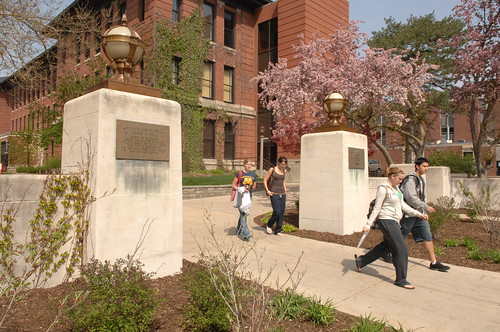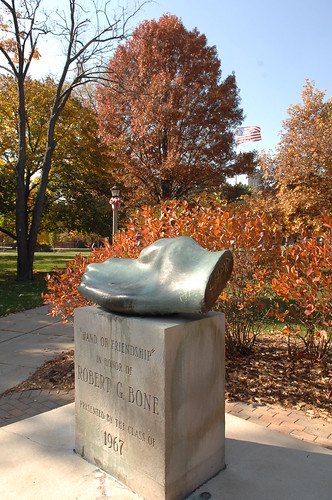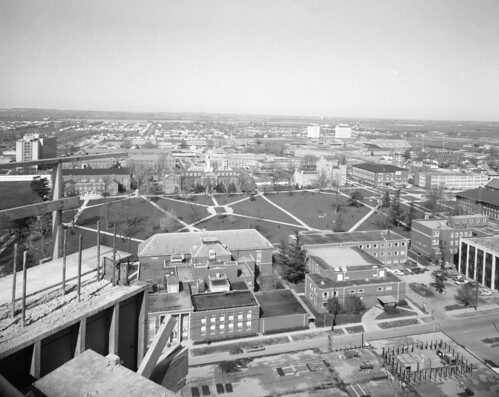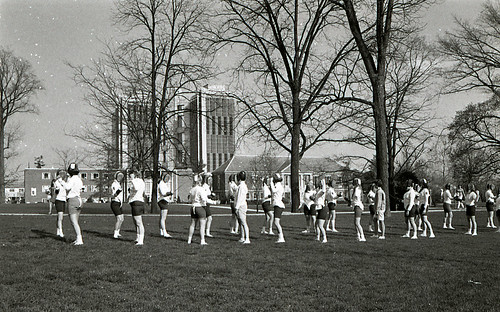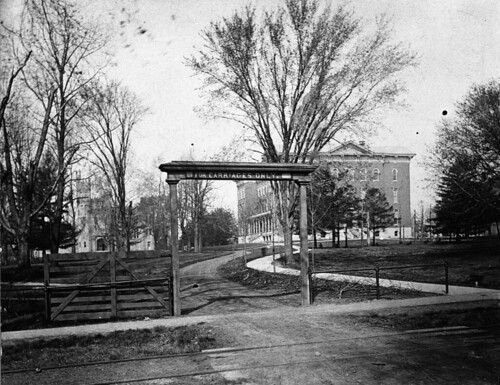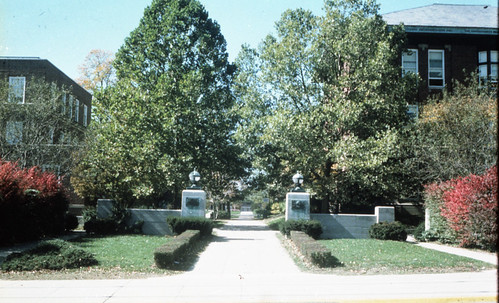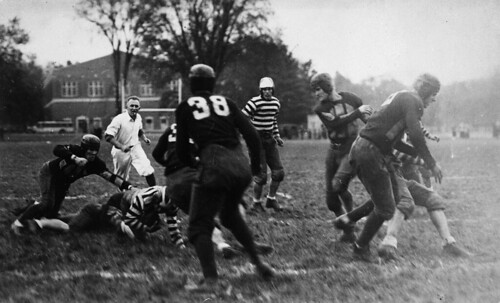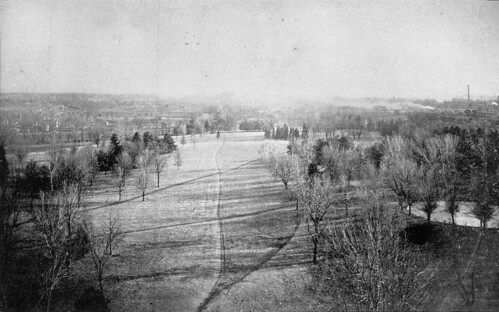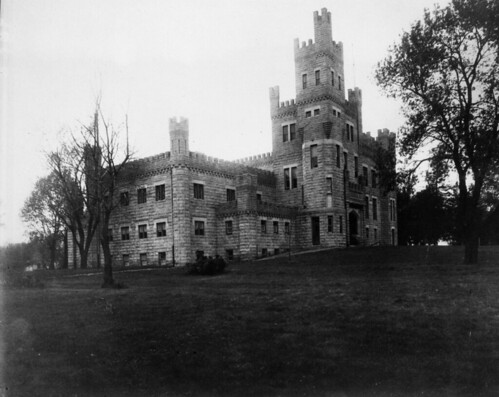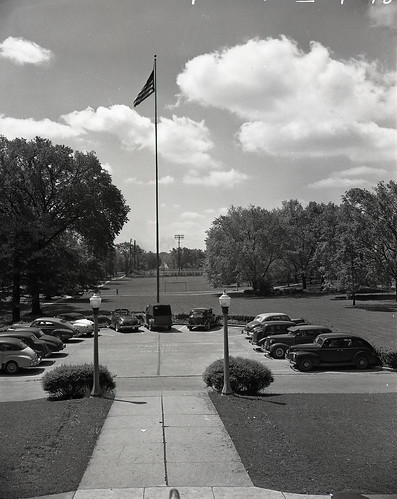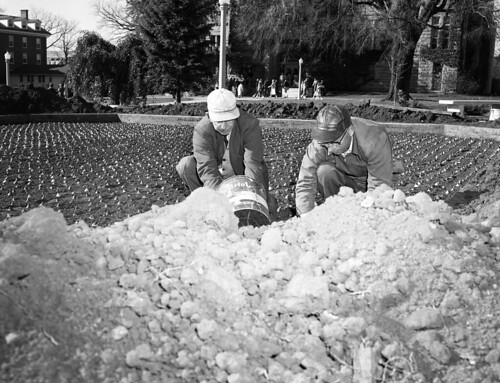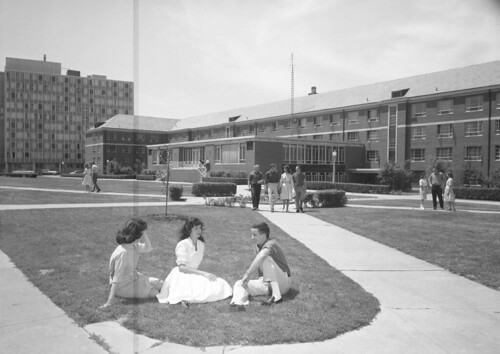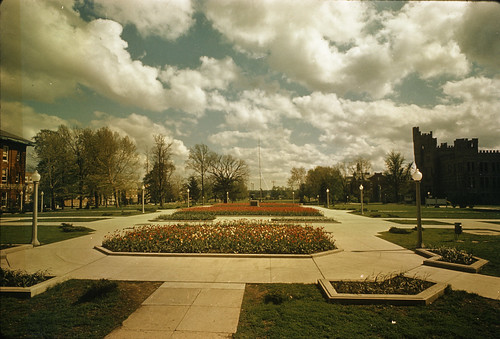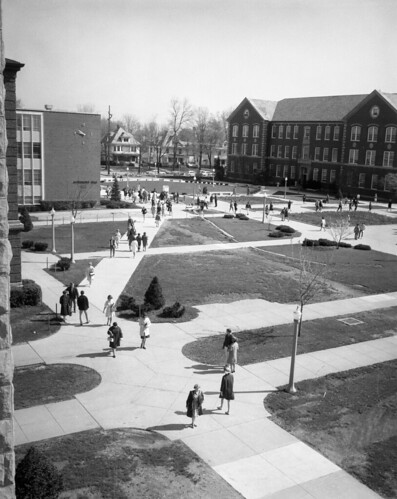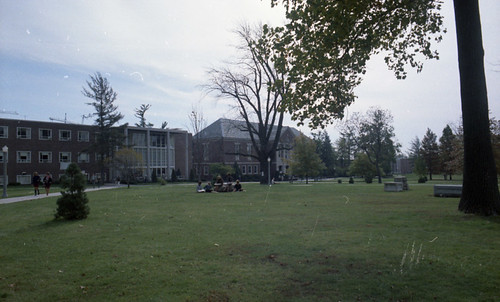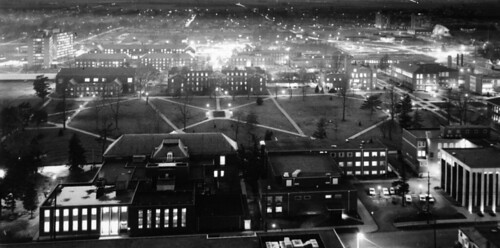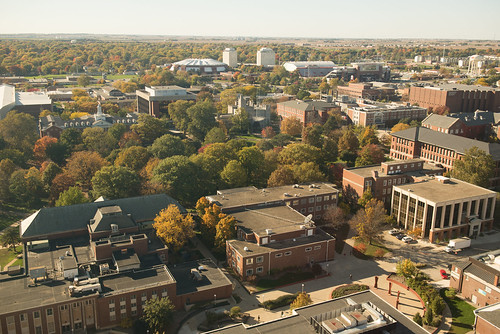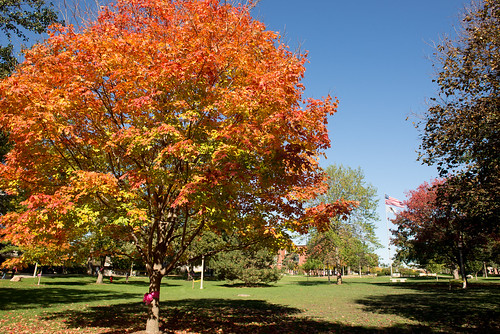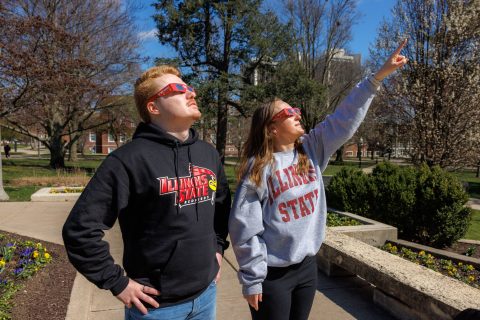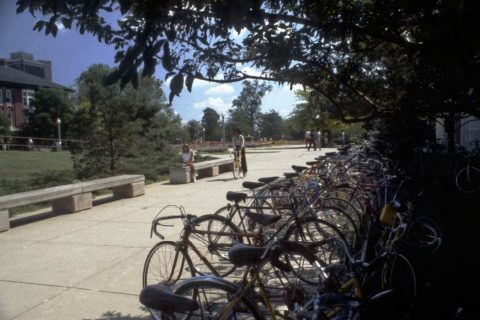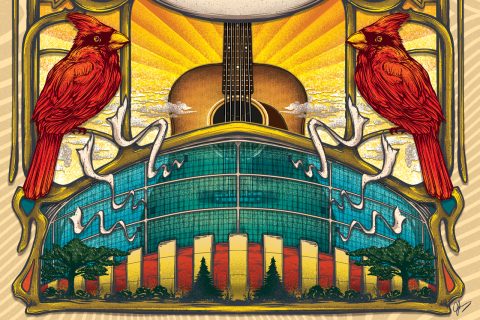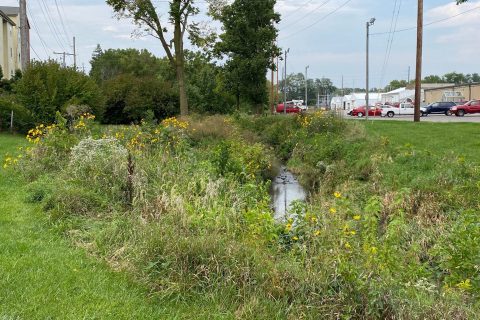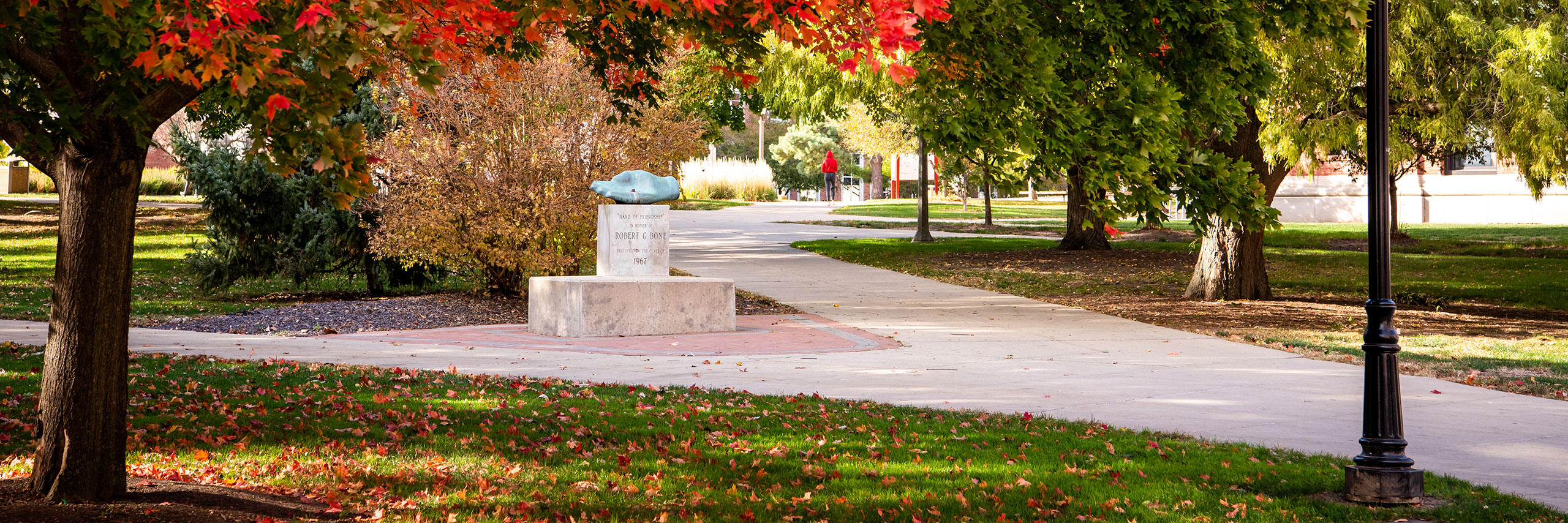
490 acre site established with thousands of trees representing over 90 species
Previous home to commencement and athletic events
From Prairie to Arboretum
-
1867
Early Days
Far from just a beautiful and relaxing path to class, Illinois State's Quad serves as a popular meeting point and host to countless planned and spontaneous activities and a great place for some quiet study on a sun-splashed day.
The Quad has been a focal point of campus life since the University's founding. Tiring of the prairie landscape, Jesse Fell, obtained $3,000 from the state legislature for campus landscaping in 1867. He hired William Saunders—known for his design of the Gettysburg National Cemetery—to create a campus grid. Fell planted nearly 1,900 trees in two years. The entire campus was granted arboretum status in 1995 and named “Fell Arboretum” after its founder, and Illinois State became the first university to achieve Tree Campus USA Status in 1998.
-
Landmarks
Gates, hands, and more
In addition to myriad tree species, the Quad is home to several campus landmarks. The Fell Gates are a main entrance to campus from the east. The Hand of Friendship sits to the west of Hovey Hall and remains a tribute to President Robert Bone. It was dedicated as a gift from the Class of 1967.
-
Events
Home to Redbird athletics
The Quad has been home to numerous events through the decades, including the University's earliest commencement ceremonies. Before Hancock Stadium's completion, the south end of the Quad where the State Farm Hall of Business now stands was the site of Redbird football games. Field hockey, baseball, softball and more were later played on the open field.
-
Today
The Heart of Campus
Many remember the Quad as the site for Rites of Spring from 1972-1977. Today events tied to Festival ISU are scheduled there as each new school year begins. New students and older alums appreciate that the Quad is still surrounded by some of the University’s busiest and beloved buildings, including Fell and Cook halls.
